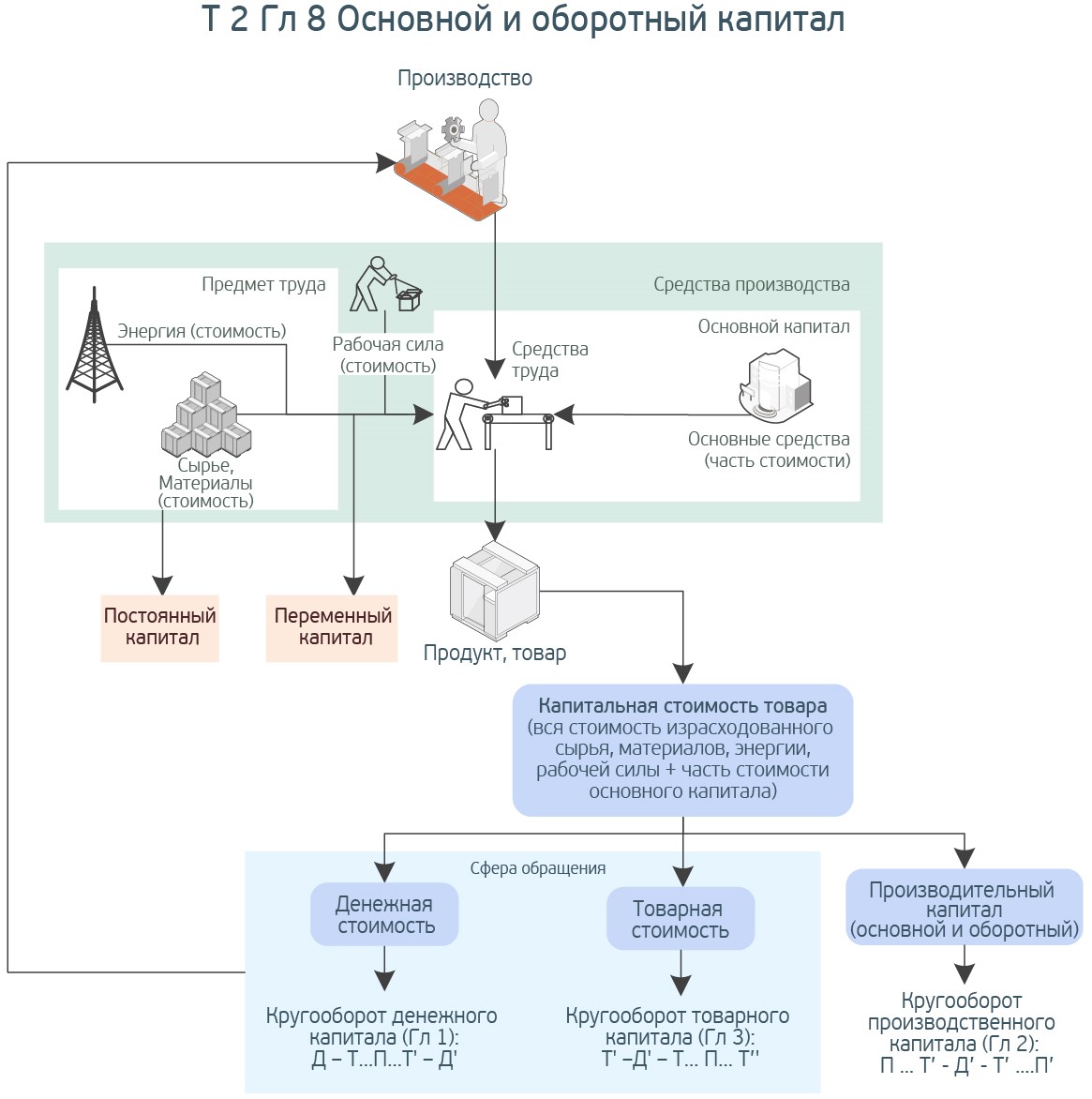What is BPM and How to Build Companies
Now no one will dispute the need, the usefulness of the description and regulation of business processes in the enterprise. There are a very large number of tools for describing business processes. In this article you will find their classification. I hope that it will help professionals who are involved in process approaches in the work of companies to navigate the BPM market. In addition, I will tell you what practical benefits BPM tools can bring and how things are with their implementation in Russia. The article has a lot of diagrams, and all of them are clickable.

“At least 40% of businesses will die in the next 10 years if they do not decide how to change the work of their companies using new technologies.”
Joni Chambers , Executive Director of Cisco Systems
“Economics is exploring large business mechanisms. Putting experiments on them is almost as difficult as on black holes. ”
Sergey Guriev , economist
Analyst and manager often find it difficult to choose which tool to describe business processes to give preference to. To facilitate market analysis, I tried to depict groups of BPM solutions in a diagram. It was based on data from a monograph by Vladimir Repin and Vitaly Eliferov, as well as from other sources on the Internet.
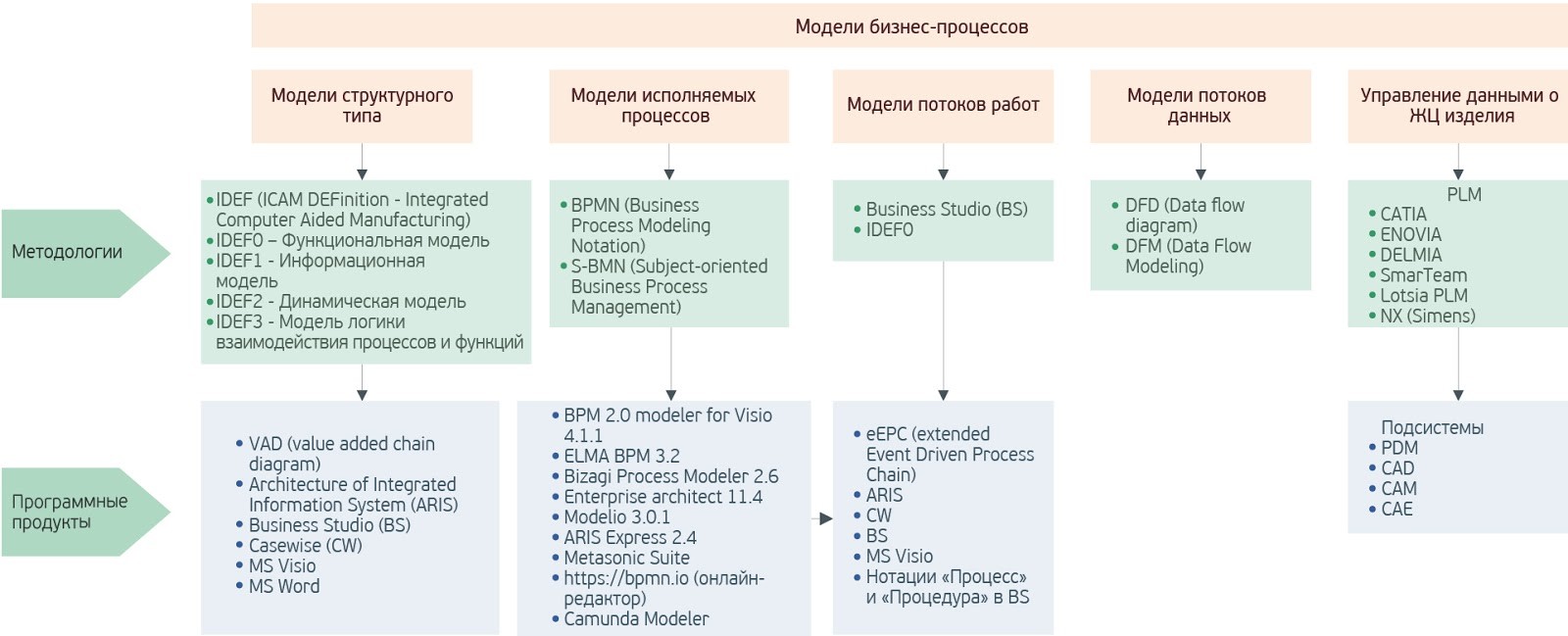 Fig. 1. Business process methodologies (all abbreviations are given at the end of the article)
Fig. 1. Business process methodologies (all abbreviations are given at the end of the article)
As can be seen from the diagram, the methodologies in the description of business processes are divided into four main areas. At the same time, separate notations for constructing business schemes are often used in various types of methodologies.
A separate fifth unit is the PLM program (Product Lifecycle Management, data management on an industrial product throughout its life cycle, from its design, manufacture, to service (maintenance) of the finished product and its disposal).
The latest versions of such programs (CATIA, DELMIA, ENOVIA, SmarTeam products) can be reliably attributed to programs for describing business processes, since they take into account all aspects of product creation - not only design and manufacturing, but also modeling of production flows, construction of enterprise planning diagrams - manufacturer, supply of components, workplace ergonomics, organizational issues. Here I will not consider this block of programs due to its specificity.
It is clear that a particular product cannot satisfy all the requirements at the same time. How to choose? The most obvious option is to track the frequency of use.
It’s enough to google to see that the most popular group of practical methods and tools is MS Visio, BPM 2.0 modeler for Visio. In our diagram, they are ranked as workflow models. They write about MS Visio as the most affordable product (it is owned by the maximum number of specialists). It allows you to build business processes in IDEF0, BPMN and EPC notations; in the latest versions there is a check of the schemes built in BPMN notation (there are, of course, no simulations).
A very common approach to building business processes comes down to drawing graphic diagrams using the simple tools listed above, mainly in manual mode. This option makes it possible to comprehend the sequence of various procedures or stages of a technological (business) process, makes it possible for an analyst to transfer the constructed scheme to a programmer to automate some element of this process.
As a typical example of such an approach, I give below the diagrams built in MS Visio in the BPMN and EPC notations (Fig. 2 and 3), which describe the business process of calculating the cost of living in a room when ordering it in a boarding house complex.
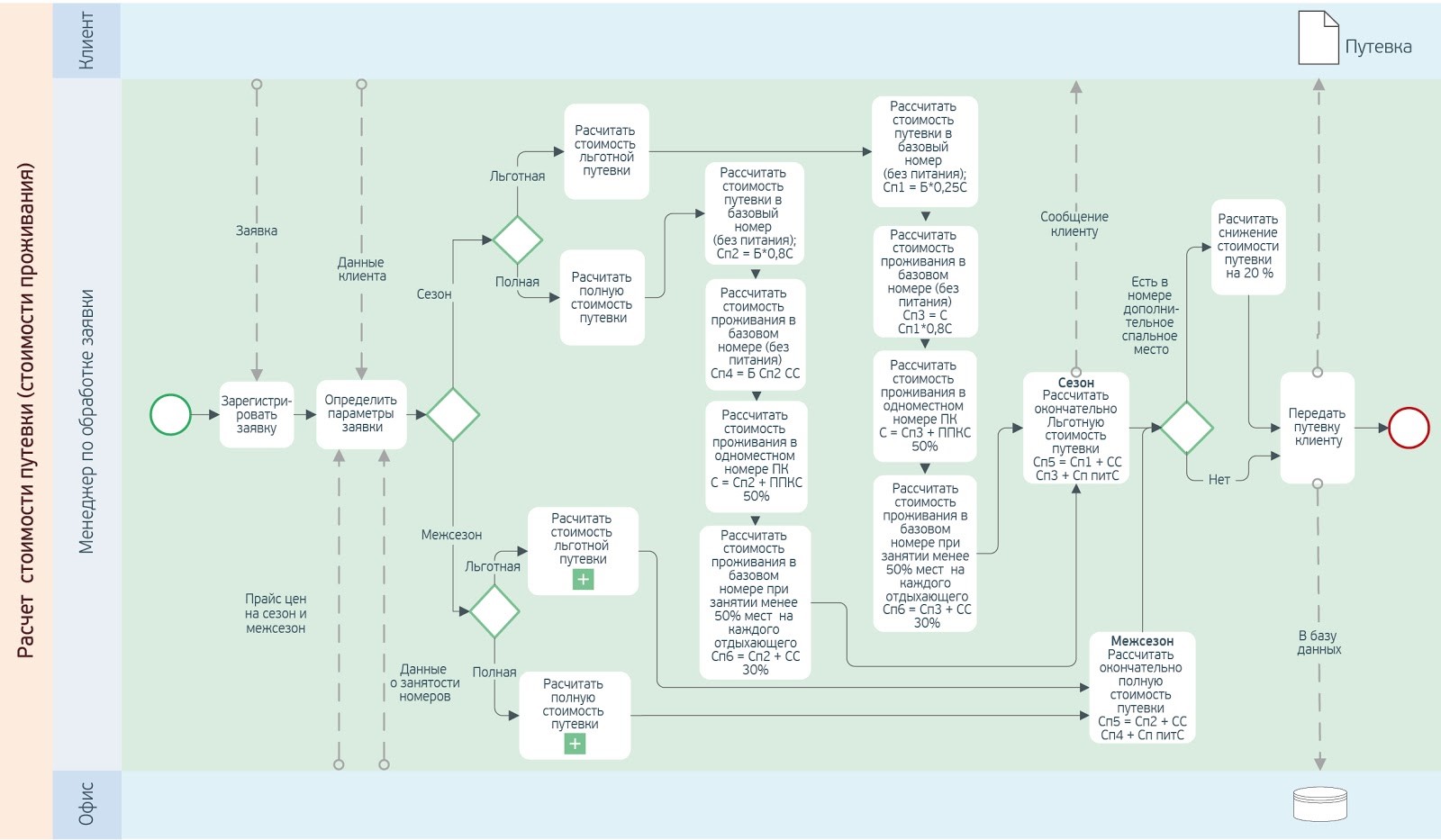 Fig. 2. Calculation of the cost of a room in a boarding house in BPMN notation (MS Visio) The
Fig. 2. Calculation of the cost of a room in a boarding house in BPMN notation (MS Visio) The
instruction governing the calculation of cost includes a multi-page text, and it will take at least several days to read and master it. The diagrams are made in strict accordance with this instruction, but, of course, they do not replace it, but supplement it - due to its simplicity and clarity, they save time on calculations.
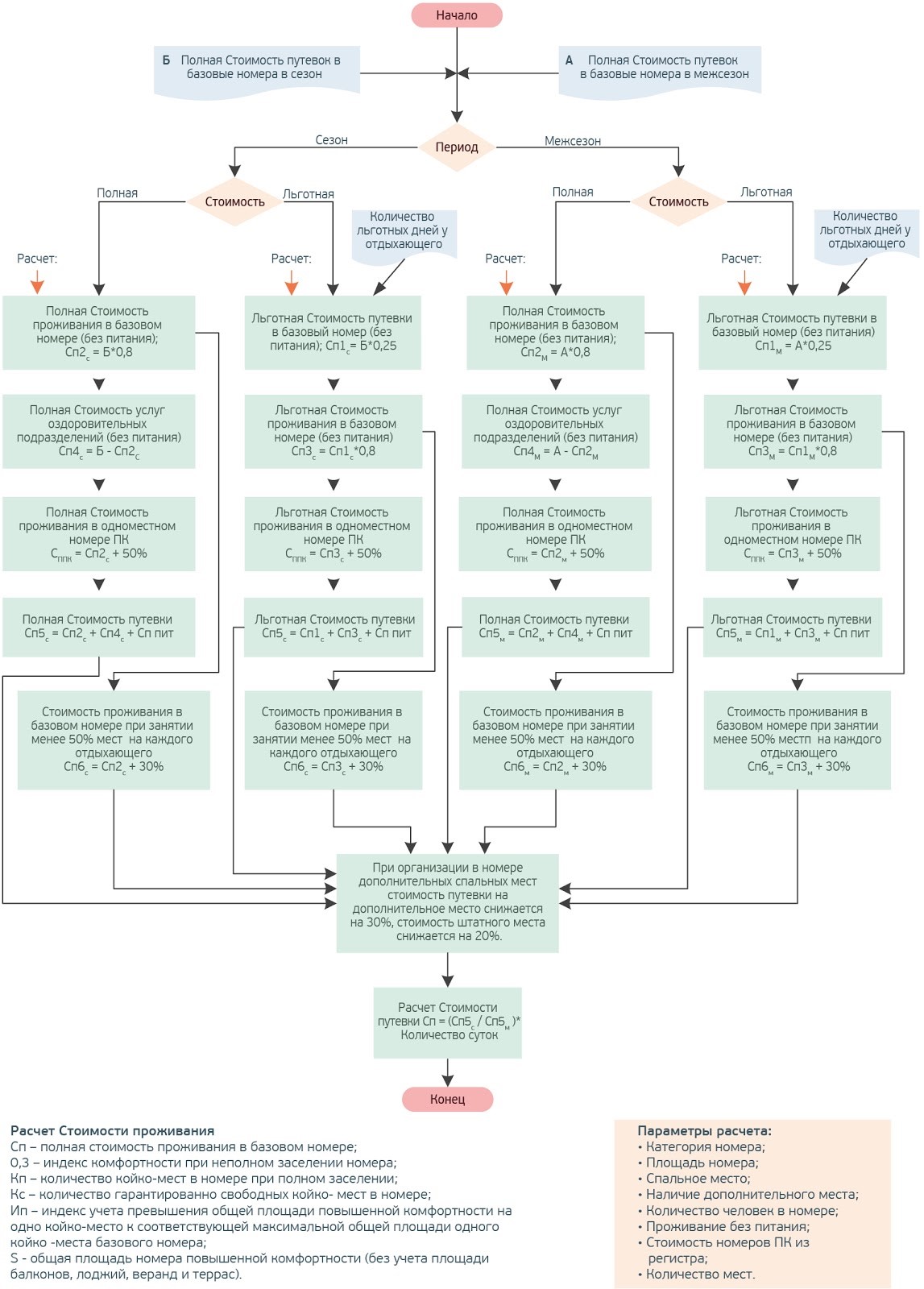 Fig. 3. Calculation of the cost of a room in a pension in EPC (MS Visio) notation
Fig. 3. Calculation of the cost of a room in a pension in EPC (MS Visio) notation
It is worth noting that the diagram in BPMN better illustrates the business process itself and is more suitable for subsequent automation. At the same time, the diagram in the EPC is more visual.
Below under the cat is another, somewhat unexpected example. A long time ago, while studying at the institute, I tried in vain to study the three volumes of K. Marx's Capital. It turned out that by shifting almost forty chapters of two volumes of this outstanding work into diagrams and diagrams, you can not only understand the contents of these volumes, but also remember in just a few hours!
On occasion, you can "trump" that you have memorized the works of K. Marx. And you don’t have to read the most detailed polemic of the economist with his many opponents-enemies, whose names for the majority today have sunk into oblivion.

Are such diagrams useful, do they help management and implementers?
The value of such diagrams is obvious, although they solve limited problems - they help to understand the chain of actions, the sequence of operations or procedures in a separate elementary process (for its subsequent automation, if necessary). You should not expect more from such schemes.
The stereotypes that are dominated by companies that implement the process approach methods are well described in the book by Vladimir Repin and Vitaliy Eliferov, which I already mentioned:
How can one not recall the aphorism of Henry Ford: “Gymnastics is complete rubbish, healthy people don’t need it, and contraindicated for patients”?
Seriously, in the current situation, which is unfavorable for business, when competition is growing, production is decreasing, new sanctions are appearing, and the process approach is becoming especially relevant for understanding the company's activities.
So, what can a company really get if it writes down all its business processes from top to bottom , which should be the goal of such a very cumbersome work?
I tried to find the answer to this question by participating in two conferences:
At the competition “BPM Project of the Year 2017”, 19 BPM projects from various regions of Russia were considered. Two projects dealt with management automation, three projects dealt with management regulation, six projects focused on optimizing business processes (i.e., reducing time and labor costs for a particular process element), and finally, the largest group - eight projects - dealt with automation development routine processes and procedures in enterprises. According to the jury, the last group provides the greatest economic effect from the regulation of business processes. And the jury’s overall assessment is not so bad in Russia with the development of tools for describing business processes.
Most projects presented the so-called mature BPM, in which all business processes in the enterprise can be considered as end-to-end. In this case, the problem areas that arise at the junctions of processes and units are identified much more convexly.
The project received the first prize“Automation of the processes of a common service center (SSC) for managing HR services”, presented by a large metallurgical and mining company EVRAZ (the number of employees is up to 80,000 people worldwide). The aim of the project was to automate the whole contour of business projects of the SSC as part of the provision of HR services. Using the bpm'online product line, the work of 200 employees of the SSC and 80 business processes is automated. More than 5,000 applications for HR requests are processed daily in compliance with standards and deadlines, the processing time for HR issues has been halved.
Interesting projectTulgan machine-building plant producing drilling equipment, received a prize in the nomination "The most successful project." Optimization of the processes of organizing production a year after the implementation of the project led to an increase in production in physical terms by 144%. Labor productivity increased by 88%, the average delivery time decreased from 210 days to 180 days.
“The best business process among government organizations” recognized the project “Management of business processes”implemented by Sberbank. As you know, Sberbank has 137 million customers and representative offices in 22 countries. Sberbank customers could note very positive changes in its work - a reduction in service time, a comprehensive transition to digital methods of working with clients. More globally (as Sberbank itself evaluates the results of implementing BPM processes), these are closed-loop BPM technologies, a single bank business process model, defining a system of related processes, etc.
The conferences presented a variety of examples of successful implementation of the description of business processes. In the report of Igor Lozovitsky “Functional-cost analysis. Successful application ” provides the calculation of the cost of business processes, the calculation of the recommended number of employees of structural divisions and the calculation of the average annual cost of customer service (in relation to the non-state pension fund“ Future ”).
I note the completely nontrivial results of this work. Thus, the constructed business process made it possible to identify its specific elements that require optimization: intra-depository transfers, opening and maintaining bank accounts of legal entities, settlements based on trading results on exchanges, etc.
As a result, the time for entering orders was reduced from 30 to 1 minutes, the number of errors in entering orders was reduced from 10% to 1%. It was possible to calculate the recommended number of employees and determine whether this number corresponds to the level of controllability. Recommendations were made to reduce the average annual cost of customer service by 21%, and it turned out to be implemented. The financial results following the results of the use of the business process are even more impressive - the total costs for the year have significantly decreased and product income has increased.
Participants of the conference recommend building a domestic product, Business Studio, for building business processes, which is convenient for using IDEF0 notation when building top-level and second-level processes. In order to further decompose the business process for the third and fourth levels, BPMN and EPC notations are recommended. In addition, Business Studio is convenient for generating various reports (the formation of the organizational structure of the enterprise and departments, financial indicators).
However, this product, built with the expectation of versatility, is quite cumbersome and difficult to learn. I am not alone in such a judgment, in particular here on Habréa similar opinion was expressed. It is more advisable, at least at the first stage, to use simpler tools (notation “Procedure” in BS, MS Visio) for describing business processes in individual departments, for describing the movement of financial documents, sales processes, working with customers, etc. .
The projects reviewed were successful, as a team of highly qualified BPM specialists worked for them for quite some time. Not every company can afford to attract pros, so most enterprises build business processes on their own, attracting their employees or creating a specialized unit from among their employees.
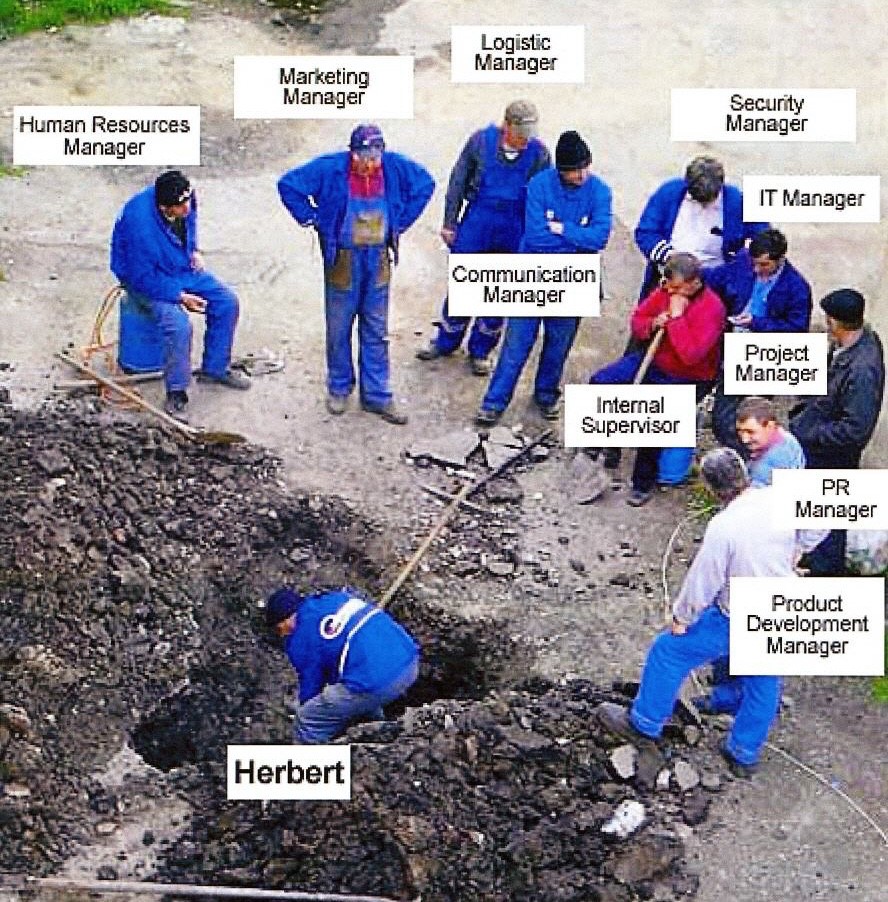 Source
Source
But in this case, the business is faced with the reluctance of employees to bear the additional burden. Vladimir Repin spoke in detail about the lack of motivation in his report “Involving managers and employees in working with business processes” .
Motivation imposed by force can sometimes give a successful result, but only if the staff is involved with a whole range of activities: training and certification of employees, visual agitation, rewards and rewards for the successful implementation of projects.
The most important thing in this process is for the management to realize the need for a comprehensive implementation of business processes at the enterprise architecture level. As E. Deming said, “Success in the struggle for quality is 94% dependent on managers and 6% on workers.”
The conference reports emphasized that in order to expect success from describing business processes and mastering the process approach, constant practice of working with processes as a key tool for engagement is necessary.
And most importantly, for this style of work to become permanent in the team: a clear role structure has been created for working with processes (including the responsibility and authority of process owners, process managers, process units, work groups); actions on working with processes were created and fixed by constant practice (as is the case with the formation of work plans, vacation schedules, payroll); incentive system created.
So, we assume that management was inspired by the idea of using business processes, we ourselves realized the need to implement a description of business processes in our enterprise, so what should be the ultimate goal of our work?
V. Eliferov believes that describing business processes is not the goal of the project. Description of business processes is a tool to improve business performance by using an integrated approach to build a business architecture in five areas simultaneously.
Here we come to the concept of the complete digital transformation of processes in a company. What does this mean besides high speed of process execution, cost reduction, increased productivity, etc.?
This is the generation of innovative projects, the high speed of adaptation to the client’s tasks, the full disclosure of the potential of each employee, the environment and safety, effective employee communications in the implementation of end-to-end processes (well, directly communism, the right word), which ultimately strengthens the stability of the company in the face of fierce competition.
 A source
A source
Abbreviations:

“At least 40% of businesses will die in the next 10 years if they do not decide how to change the work of their companies using new technologies.”
Joni Chambers , Executive Director of Cisco Systems
“Economics is exploring large business mechanisms. Putting experiments on them is almost as difficult as on black holes. ”
Sergey Guriev , economist
Analyst and manager often find it difficult to choose which tool to describe business processes to give preference to. To facilitate market analysis, I tried to depict groups of BPM solutions in a diagram. It was based on data from a monograph by Vladimir Repin and Vitaly Eliferov, as well as from other sources on the Internet.

As can be seen from the diagram, the methodologies in the description of business processes are divided into four main areas. At the same time, separate notations for constructing business schemes are often used in various types of methodologies.
A separate fifth unit is the PLM program (Product Lifecycle Management, data management on an industrial product throughout its life cycle, from its design, manufacture, to service (maintenance) of the finished product and its disposal).
The latest versions of such programs (CATIA, DELMIA, ENOVIA, SmarTeam products) can be reliably attributed to programs for describing business processes, since they take into account all aspects of product creation - not only design and manufacturing, but also modeling of production flows, construction of enterprise planning diagrams - manufacturer, supply of components, workplace ergonomics, organizational issues. Here I will not consider this block of programs due to its specificity.
Various criteria can determine the choice of a specific BPM solution:
- frequency of use by other users;
- simplicity, visibility, ease of development, speed of drawing schemes;
- a wide range of possibilities (uploading results to various public formats, the ability to verify the constructed process and the ability to simulate);
- the ability to describe very complex, branched corporate processes;
- availability, cost.
It is clear that a particular product cannot satisfy all the requirements at the same time. How to choose? The most obvious option is to track the frequency of use.
It’s enough to google to see that the most popular group of practical methods and tools is MS Visio, BPM 2.0 modeler for Visio. In our diagram, they are ranked as workflow models. They write about MS Visio as the most affordable product (it is owned by the maximum number of specialists). It allows you to build business processes in IDEF0, BPMN and EPC notations; in the latest versions there is a check of the schemes built in BPMN notation (there are, of course, no simulations).
A very common approach to building business processes comes down to drawing graphic diagrams using the simple tools listed above, mainly in manual mode. This option makes it possible to comprehend the sequence of various procedures or stages of a technological (business) process, makes it possible for an analyst to transfer the constructed scheme to a programmer to automate some element of this process.
As a typical example of such an approach, I give below the diagrams built in MS Visio in the BPMN and EPC notations (Fig. 2 and 3), which describe the business process of calculating the cost of living in a room when ordering it in a boarding house complex.

instruction governing the calculation of cost includes a multi-page text, and it will take at least several days to read and master it. The diagrams are made in strict accordance with this instruction, but, of course, they do not replace it, but supplement it - due to its simplicity and clarity, they save time on calculations.

It is worth noting that the diagram in BPMN better illustrates the business process itself and is more suitable for subsequent automation. At the same time, the diagram in the EPC is more visual.
Below under the cat is another, somewhat unexpected example. A long time ago, while studying at the institute, I tried in vain to study the three volumes of K. Marx's Capital. It turned out that by shifting almost forty chapters of two volumes of this outstanding work into diagrams and diagrams, you can not only understand the contents of these volumes, but also remember in just a few hours!
On occasion, you can "trump" that you have memorized the works of K. Marx. And you don’t have to read the most detailed polemic of the economist with his many opponents-enemies, whose names for the majority today have sunk into oblivion.

Are such diagrams useful, do they help management and implementers?
The value of such diagrams is obvious, although they solve limited problems - they help to understand the chain of actions, the sequence of operations or procedures in a separate elementary process (for its subsequent automation, if necessary). You should not expect more from such schemes.
But do we need BPM if we already understand everything and everything is fine with us?
The stereotypes that are dominated by companies that implement the process approach methods are well described in the book by Vladimir Repin and Vitaliy Eliferov, which I already mentioned:
- BPM is needed simply because it is effective, interesting, cool, smart, beautiful, fashionable, they do it in the USA, etc .;
- it is necessary to apply new methods of the process approach, for this it is necessary to train employees or additionally hire more business analysts, and work with business processes will be established;
- it is necessary to issue an order “Implement a process approach from such a date”, and the company's business processes will be built.
How can one not recall the aphorism of Henry Ford: “Gymnastics is complete rubbish, healthy people don’t need it, and contraindicated for patients”?
Seriously, in the current situation, which is unfavorable for business, when competition is growing, production is decreasing, new sanctions are appearing, and the process approach is becoming especially relevant for understanding the company's activities.
So, what can a company really get if it writes down all its business processes from top to bottom , which should be the goal of such a very cumbersome work?
I tried to find the answer to this question by participating in two conferences:
- Results of the contest “BPM-project of the year 2017” (organized by the Association of BPM-Professionals ABPMP Russian Chapter),
- “Designing business architectures” (dedicated to the design and development of companies based on a systematic approach. The organizers are GK “Modern management technologies” and Business Studio for Professionals club ).
Not everything is so bad in Russia with BPM
At the competition “BPM Project of the Year 2017”, 19 BPM projects from various regions of Russia were considered. Two projects dealt with management automation, three projects dealt with management regulation, six projects focused on optimizing business processes (i.e., reducing time and labor costs for a particular process element), and finally, the largest group - eight projects - dealt with automation development routine processes and procedures in enterprises. According to the jury, the last group provides the greatest economic effect from the regulation of business processes. And the jury’s overall assessment is not so bad in Russia with the development of tools for describing business processes.
Most projects presented the so-called mature BPM, in which all business processes in the enterprise can be considered as end-to-end. In this case, the problem areas that arise at the junctions of processes and units are identified much more convexly.
The project received the first prize“Automation of the processes of a common service center (SSC) for managing HR services”, presented by a large metallurgical and mining company EVRAZ (the number of employees is up to 80,000 people worldwide). The aim of the project was to automate the whole contour of business projects of the SSC as part of the provision of HR services. Using the bpm'online product line, the work of 200 employees of the SSC and 80 business processes is automated. More than 5,000 applications for HR requests are processed daily in compliance with standards and deadlines, the processing time for HR issues has been halved.
Interesting projectTulgan machine-building plant producing drilling equipment, received a prize in the nomination "The most successful project." Optimization of the processes of organizing production a year after the implementation of the project led to an increase in production in physical terms by 144%. Labor productivity increased by 88%, the average delivery time decreased from 210 days to 180 days.
“The best business process among government organizations” recognized the project “Management of business processes”implemented by Sberbank. As you know, Sberbank has 137 million customers and representative offices in 22 countries. Sberbank customers could note very positive changes in its work - a reduction in service time, a comprehensive transition to digital methods of working with clients. More globally (as Sberbank itself evaluates the results of implementing BPM processes), these are closed-loop BPM technologies, a single bank business process model, defining a system of related processes, etc.
Sberbank has been optimizing processes in recent years. At one time, LANIT BP specialists helped the bank automate 12 business processes based on the Pega RULES Process Commander BPM platform: lending transactions to individuals, paying compensation for deposits, managing accounts of legal entities, considering loan applications, military pensions, foreign exchange control of legal entities, etc. The developed solution was implemented in the Moscow region and adapted for replication throughout Russia.
In addition, on the basis of the Pega RULES Process Commander, the Bank automated the activities of the Legal Department: a single window for an internal client was created, serving more than 3 thousand users. Thanks to the appearance of end-to-end processing of incoming requests, the ability to control deadlines and detailed statistics on which employee processes which task, the labor costs of the legal department have decreased.
The conferences presented a variety of examples of successful implementation of the description of business processes. In the report of Igor Lozovitsky “Functional-cost analysis. Successful application ” provides the calculation of the cost of business processes, the calculation of the recommended number of employees of structural divisions and the calculation of the average annual cost of customer service (in relation to the non-state pension fund“ Future ”).
I note the completely nontrivial results of this work. Thus, the constructed business process made it possible to identify its specific elements that require optimization: intra-depository transfers, opening and maintaining bank accounts of legal entities, settlements based on trading results on exchanges, etc.
As a result, the time for entering orders was reduced from 30 to 1 minutes, the number of errors in entering orders was reduced from 10% to 1%. It was possible to calculate the recommended number of employees and determine whether this number corresponds to the level of controllability. Recommendations were made to reduce the average annual cost of customer service by 21%, and it turned out to be implemented. The financial results following the results of the use of the business process are even more impressive - the total costs for the year have significantly decreased and product income has increased.
Participants of the conference recommend building a domestic product, Business Studio, for building business processes, which is convenient for using IDEF0 notation when building top-level and second-level processes. In order to further decompose the business process for the third and fourth levels, BPMN and EPC notations are recommended. In addition, Business Studio is convenient for generating various reports (the formation of the organizational structure of the enterprise and departments, financial indicators).
However, this product, built with the expectation of versatility, is quite cumbersome and difficult to learn. I am not alone in such a judgment, in particular here on Habréa similar opinion was expressed. It is more advisable, at least at the first stage, to use simpler tools (notation “Procedure” in BS, MS Visio) for describing business processes in individual departments, for describing the movement of financial documents, sales processes, working with customers, etc. .
How to replenish a number of successful cases?
The projects reviewed were successful, as a team of highly qualified BPM specialists worked for them for quite some time. Not every company can afford to attract pros, so most enterprises build business processes on their own, attracting their employees or creating a specialized unit from among their employees.

But in this case, the business is faced with the reluctance of employees to bear the additional burden. Vladimir Repin spoke in detail about the lack of motivation in his report “Involving managers and employees in working with business processes” .
Motivation imposed by force can sometimes give a successful result, but only if the staff is involved with a whole range of activities: training and certification of employees, visual agitation, rewards and rewards for the successful implementation of projects.
The most important thing in this process is for the management to realize the need for a comprehensive implementation of business processes at the enterprise architecture level. As E. Deming said, “Success in the struggle for quality is 94% dependent on managers and 6% on workers.”
“The problem of building an effective organization management system is not that people know little about it, the problem is that it seems to them that they know everything.”
Igor Lozovitsky. "Development motivated leader"
The conference reports emphasized that in order to expect success from describing business processes and mastering the process approach, constant practice of working with processes as a key tool for engagement is necessary.
And most importantly, for this style of work to become permanent in the team: a clear role structure has been created for working with processes (including the responsibility and authority of process owners, process managers, process units, work groups); actions on working with processes were created and fixed by constant practice (as is the case with the formation of work plans, vacation schedules, payroll); incentive system created.
So, we assume that management was inspired by the idea of using business processes, we ourselves realized the need to implement a description of business processes in our enterprise, so what should be the ultimate goal of our work?
Remember the main thing
V. Eliferov believes that describing business processes is not the goal of the project. Description of business processes is a tool to improve business performance by using an integrated approach to build a business architecture in five areas simultaneously.
- Business processes of company management (Regulation of work of accounting units, decision making and planning)
- Business processes design (Standardization of design work)
- Technological business processes (Documenting technologies and increasing the reproducibility of technologies)
- Procedural business processes (Standardization of general procedures, creation of universal role-based business processes)
- Executable business processes (Automation of routine operations - workflow, information exchange, etc.)
Here we come to the concept of the complete digital transformation of processes in a company. What does this mean besides high speed of process execution, cost reduction, increased productivity, etc.?
This is the generation of innovative projects, the high speed of adaptation to the client’s tasks, the full disclosure of the potential of each employee, the environment and safety, effective employee communications in the implementation of end-to-end processes (well, directly communism, the right word), which ultimately strengthens the stability of the company in the face of fierce competition.

By the way, we have vacancies in the division specializing in BPM:
Abbreviations:
| ARIS | Architecture of Integrated Information Systems, (architecture of integrated information systems) |
| BPMN | Business Process Model and Notation, (Notation and Business Process Model) |
| BPMS | Business Process Management System, (business process management system) |
| BS | Business Studio (program) |
| CAD / CAM / CAE | Computer-aided design (computer support for design) Computer-aided manufacturing (computer support for manufacturing) Computer-aided engineering (computer support for engineering calculations) |
| CATIA | Computer aided three-dimensional interactive application (CAD) |
| CRM | Customer Relationship Management (customer relationship management system) |
| Dfd | Data Flow Diagramming |
| eEPC | Extended event-driven process chain |
| ERP | Enterprise Resource Planning |
| IDEF | Integration Definition for Function Modeling |
| PDM | Product Data Management |
| Plm | Product Lifecycle Management (managing product data throughout its life cycle) |
| CAD | CAD system |
| SED | Electronic document management system |



